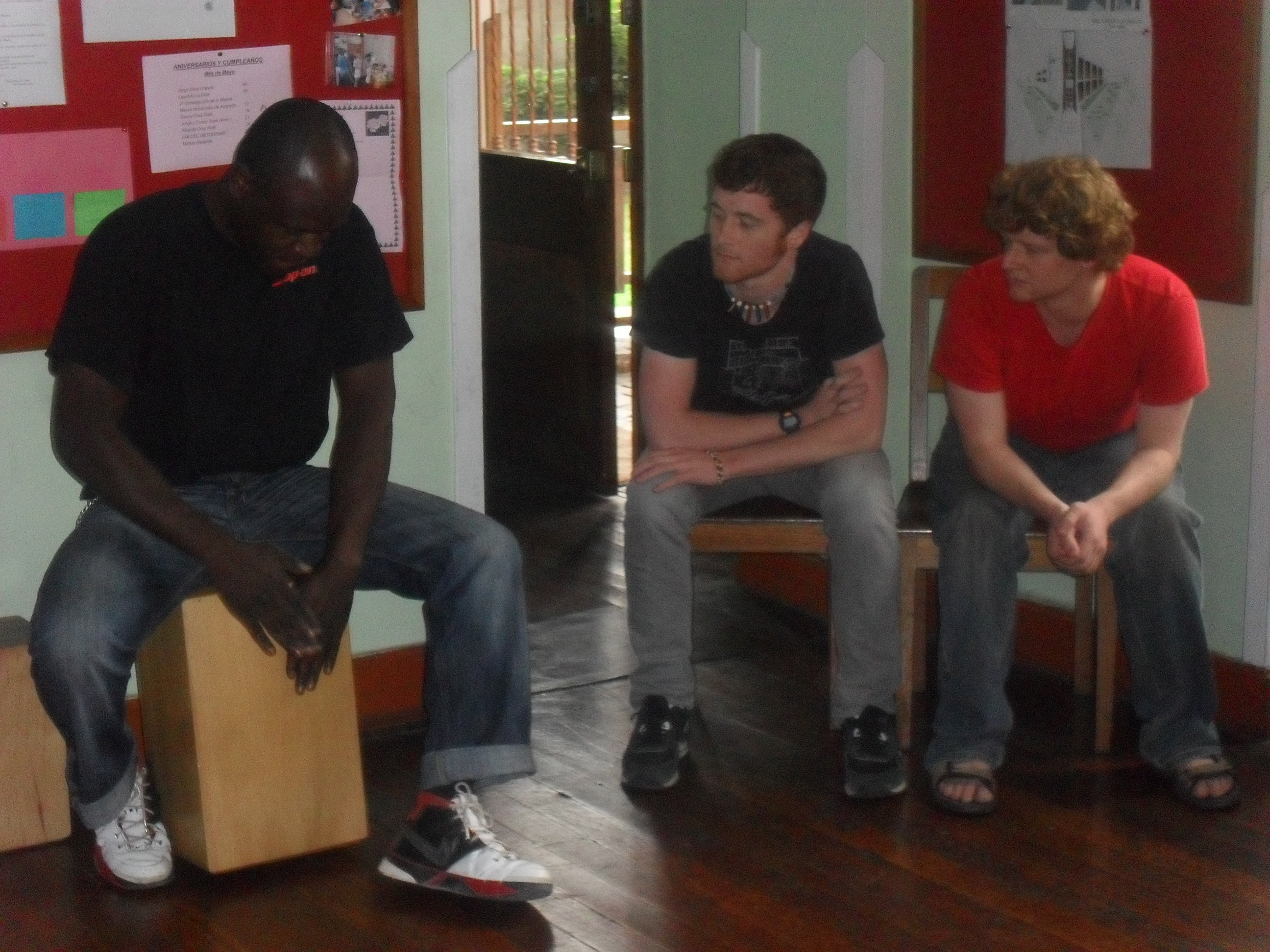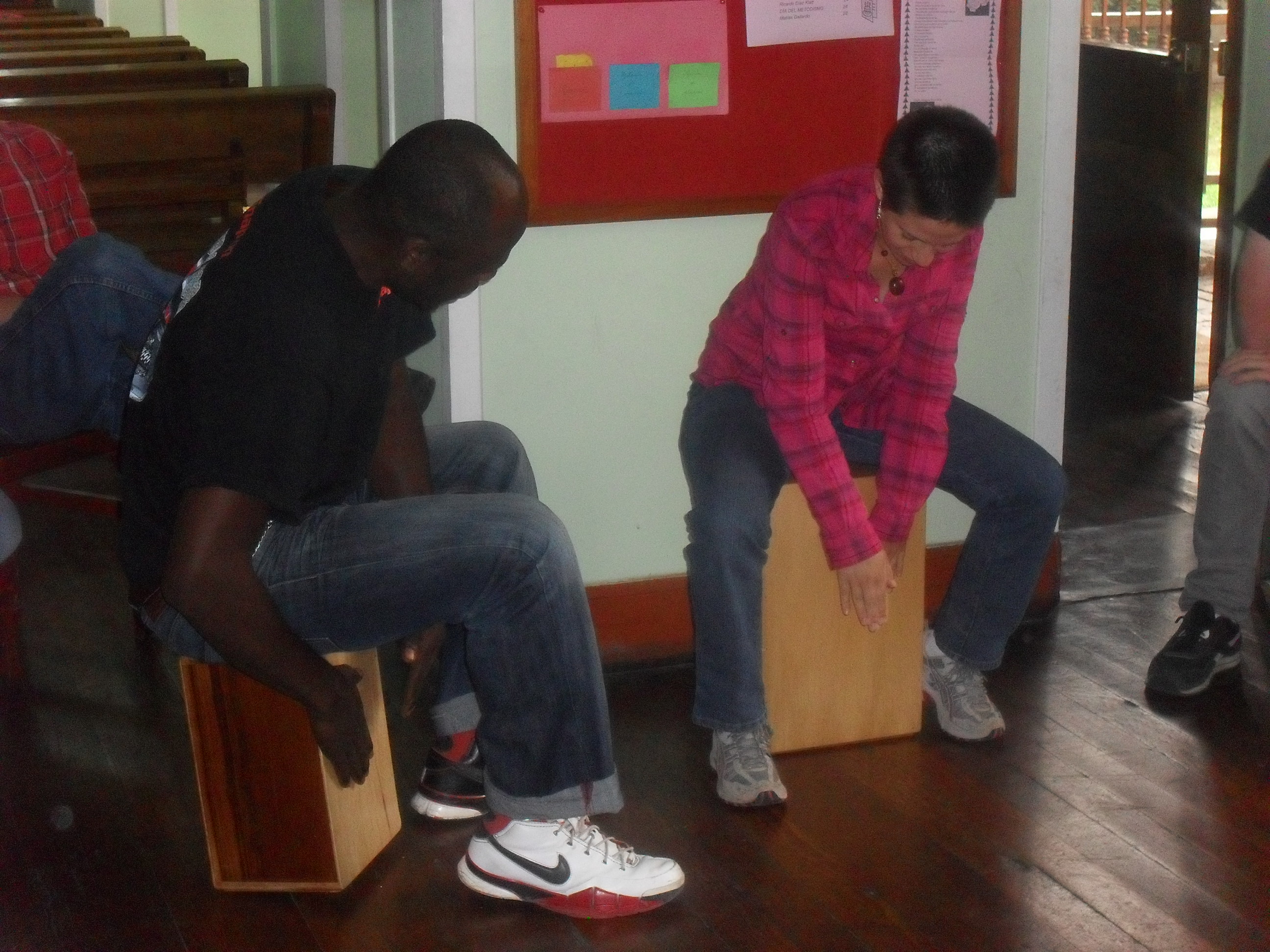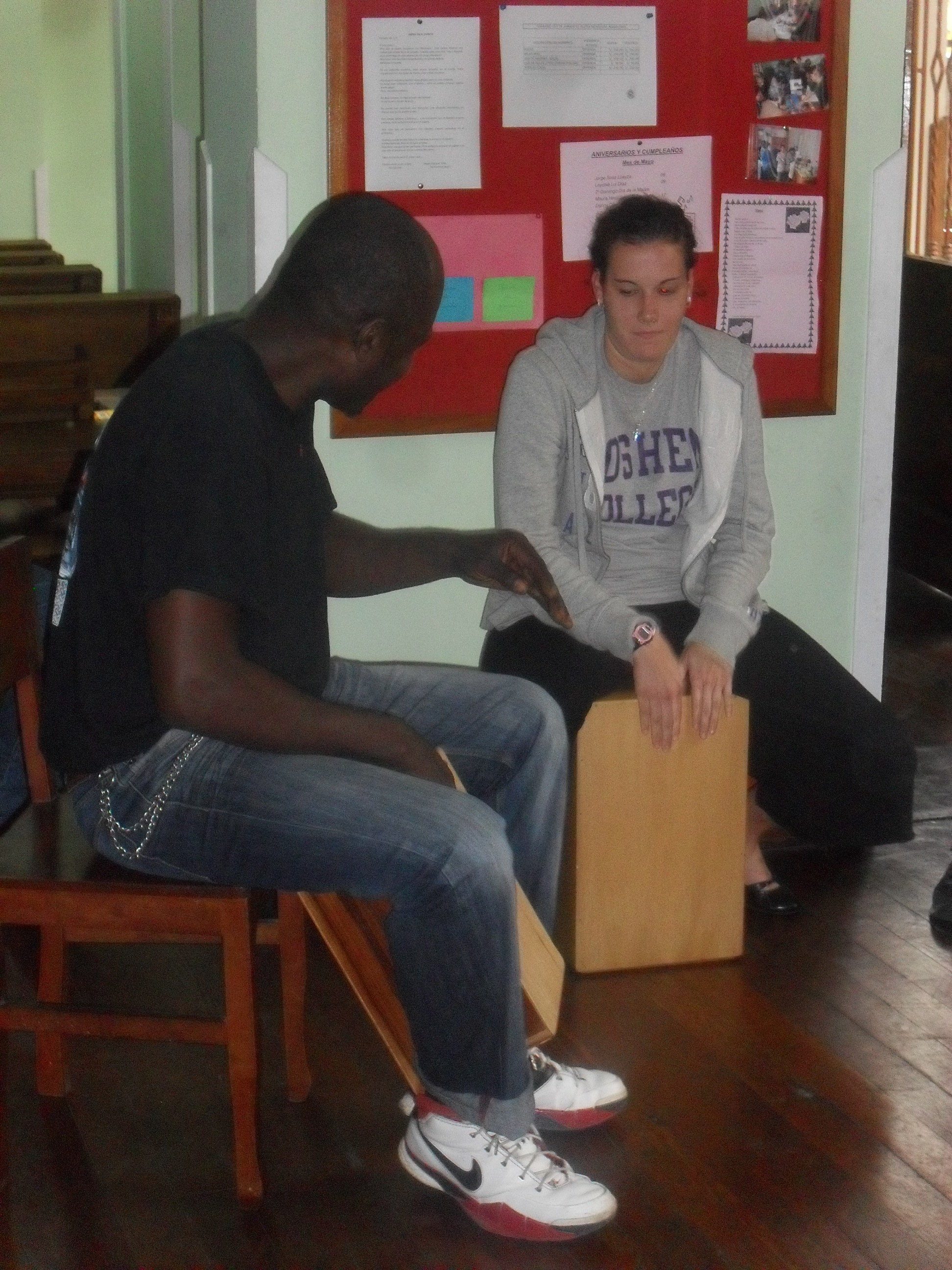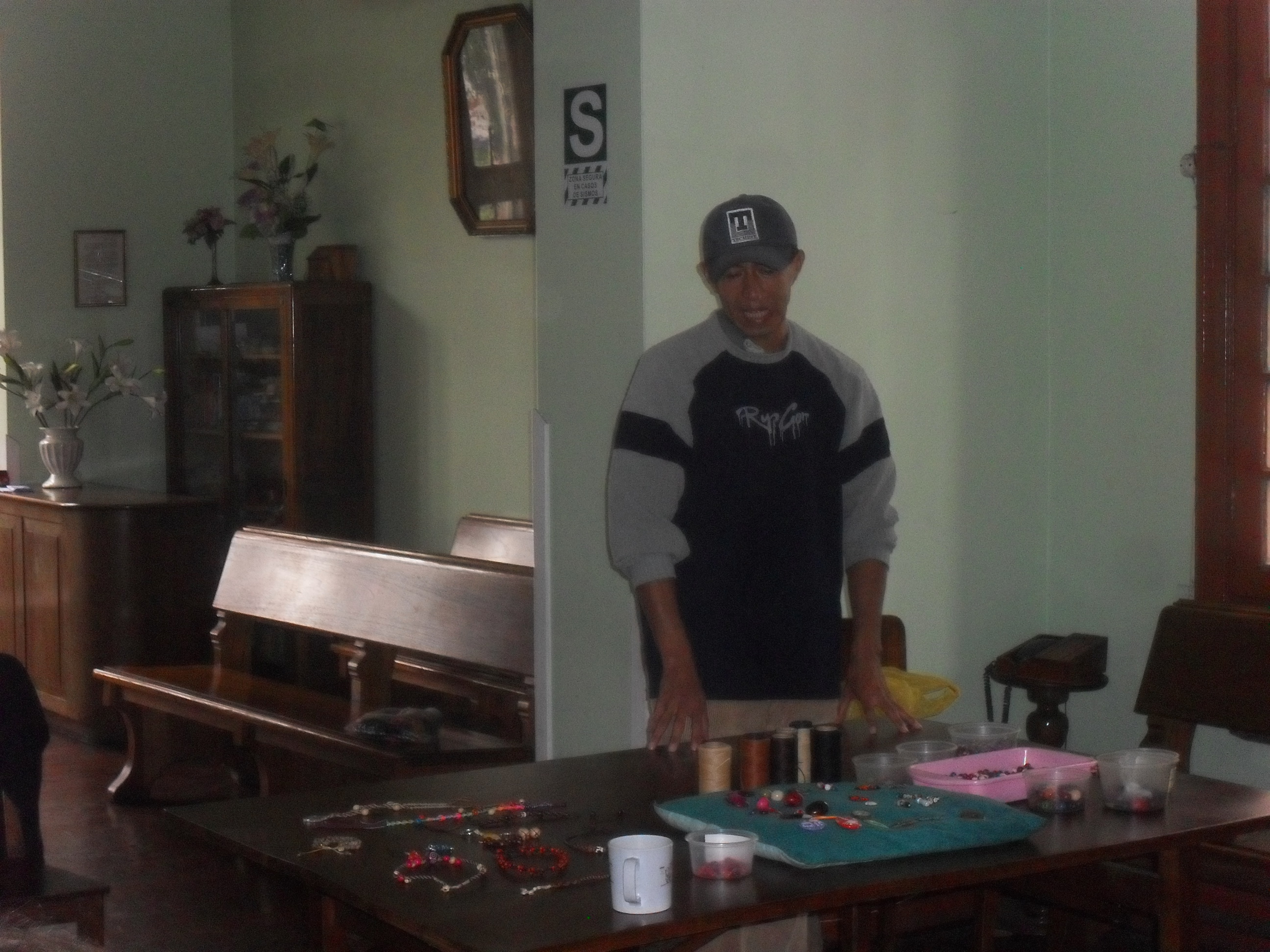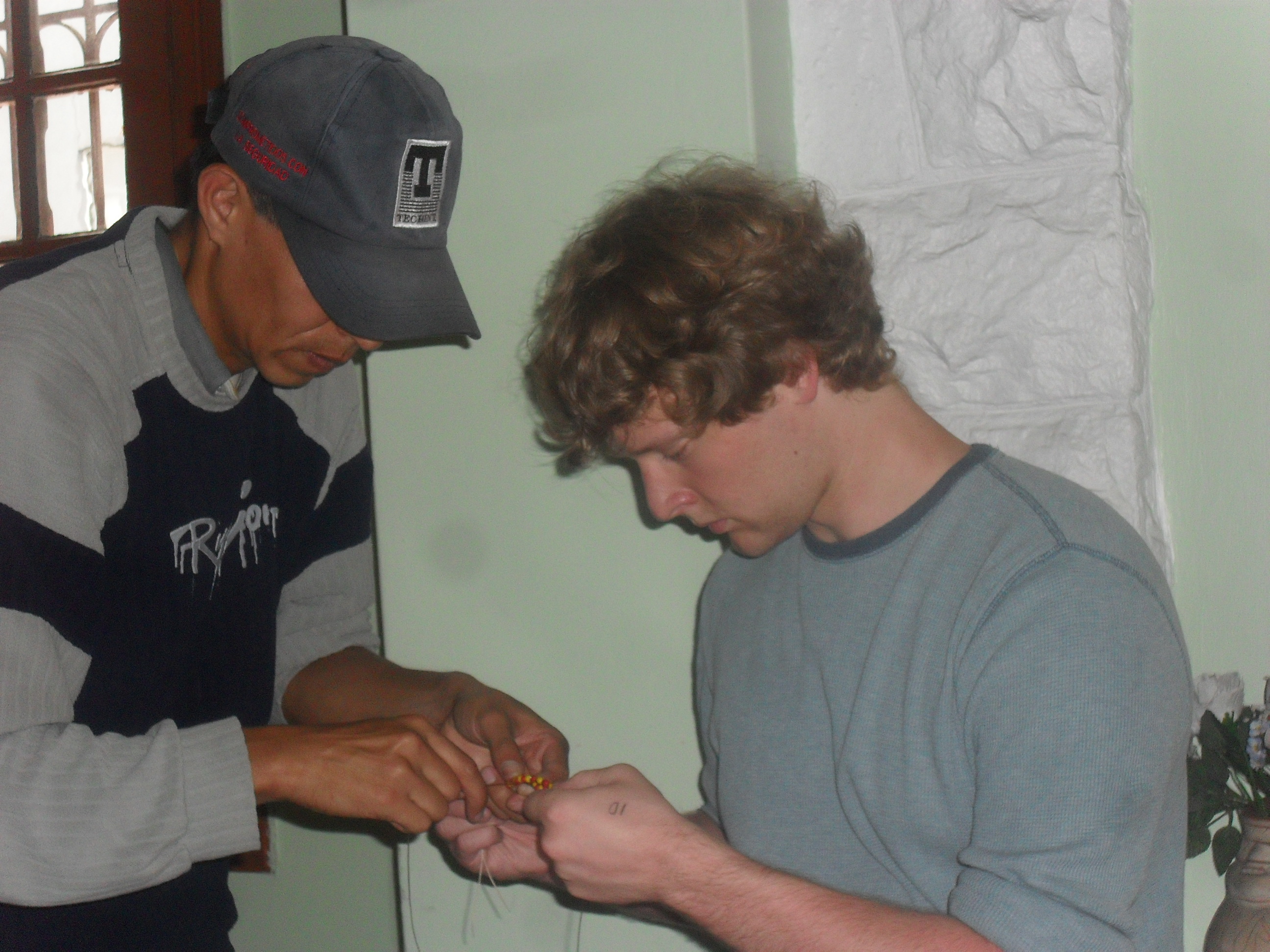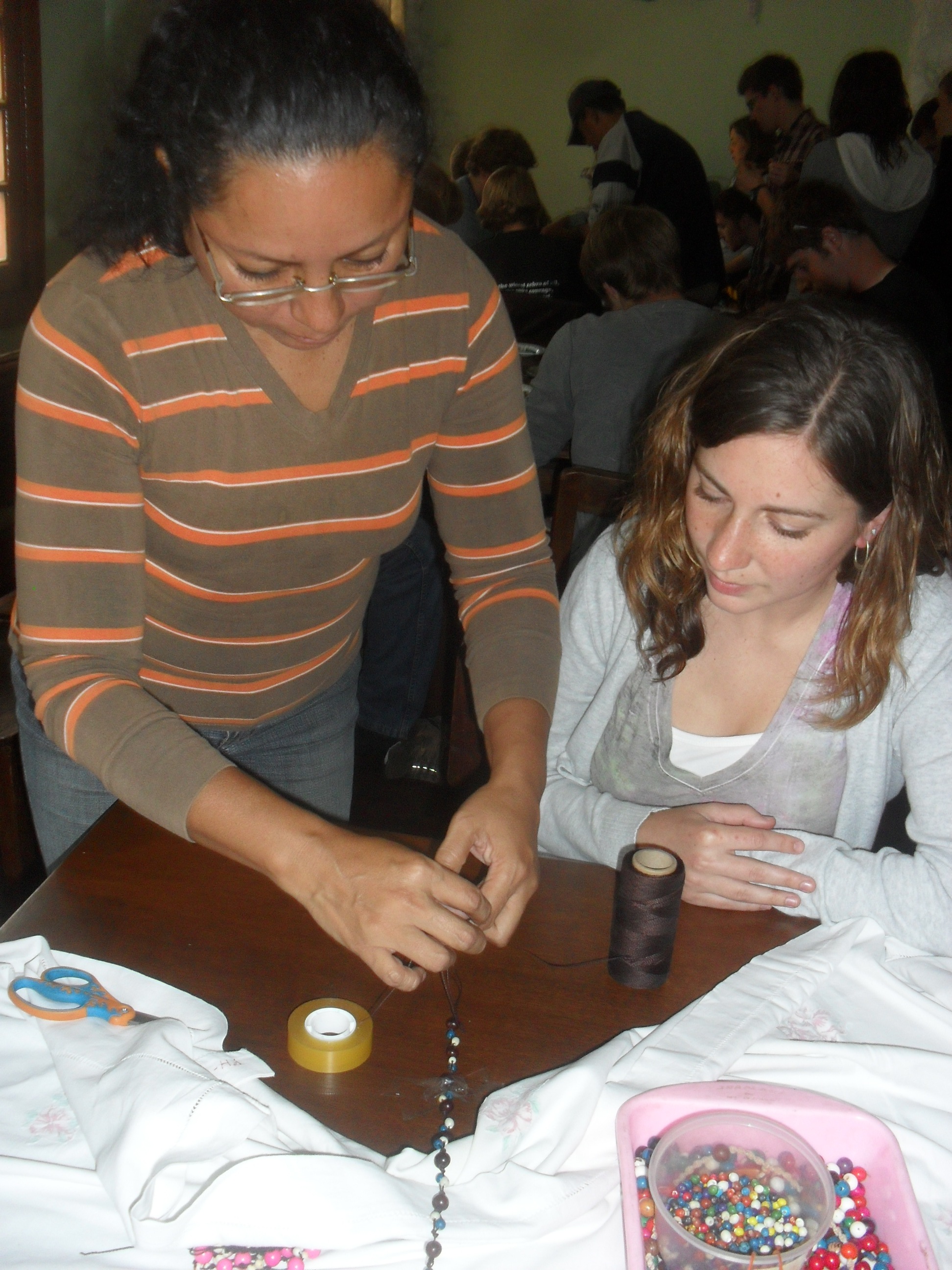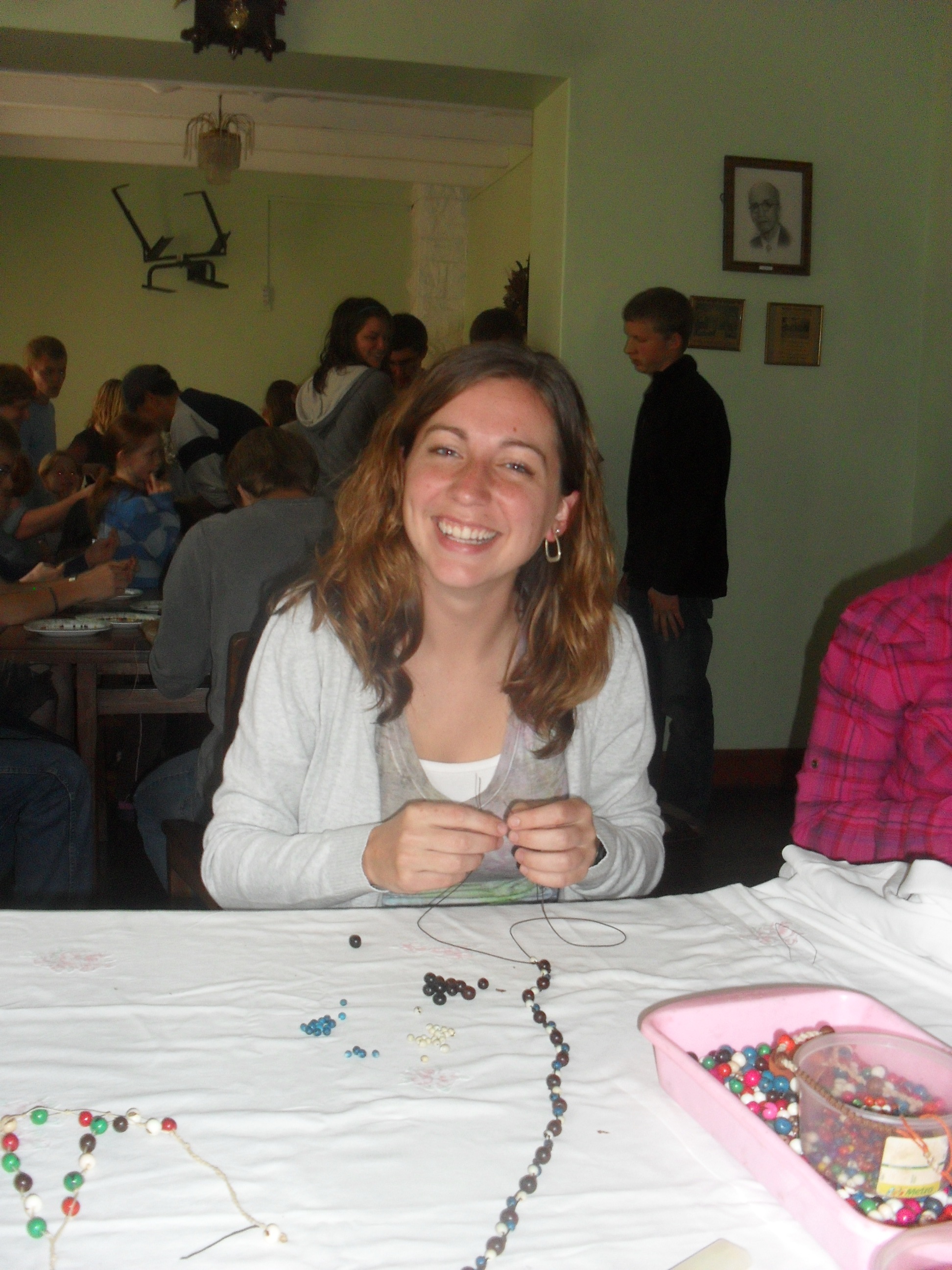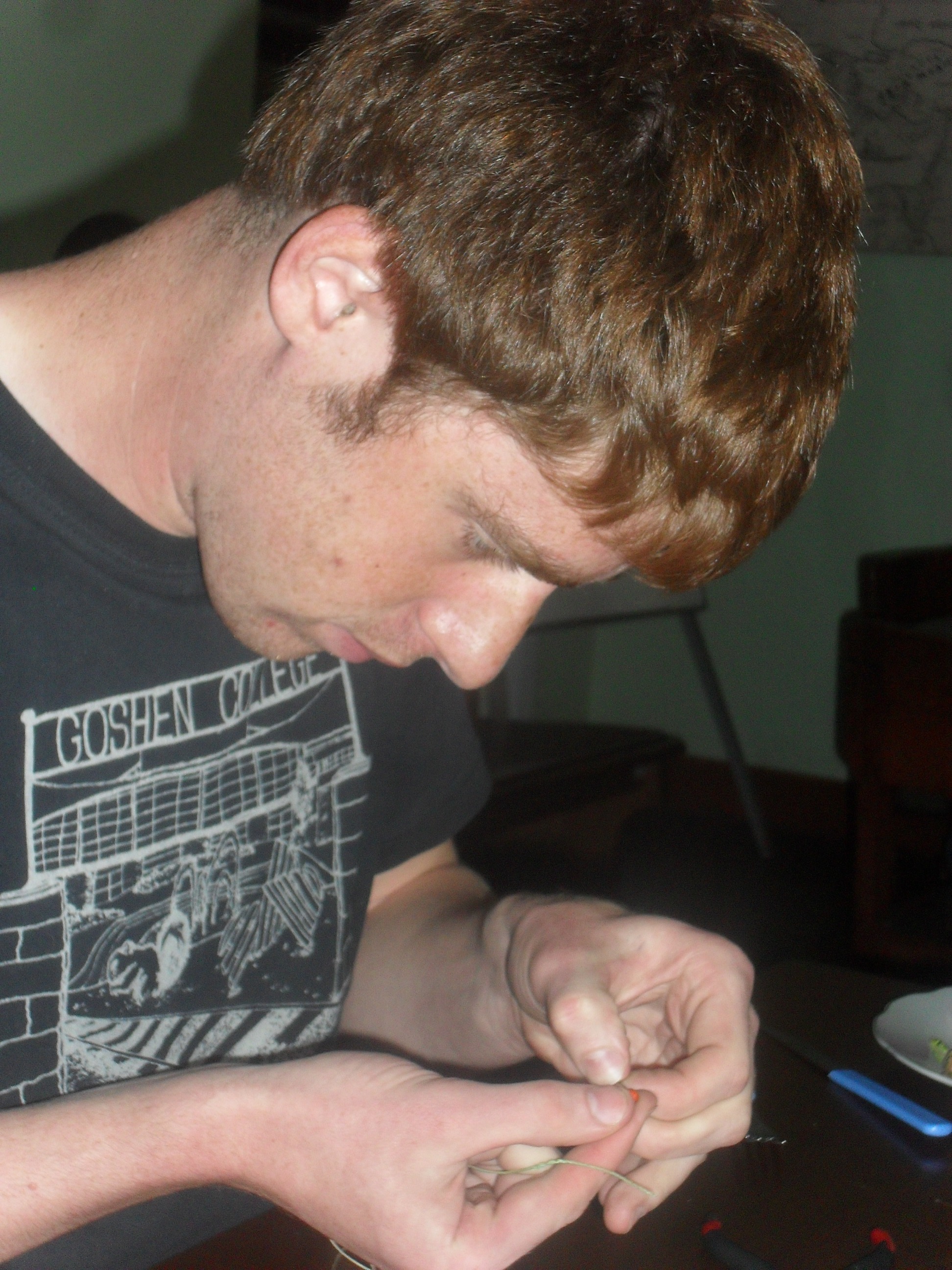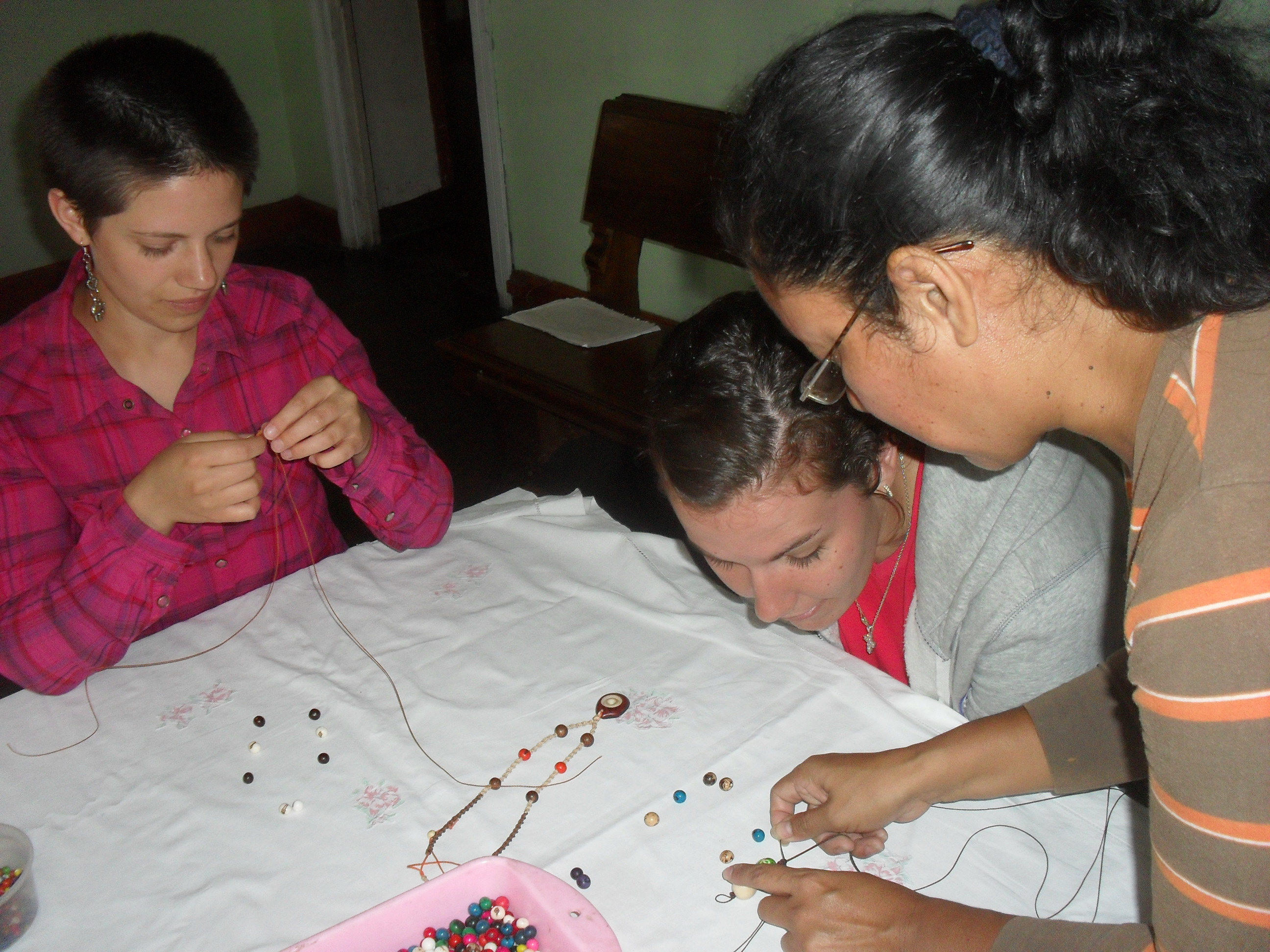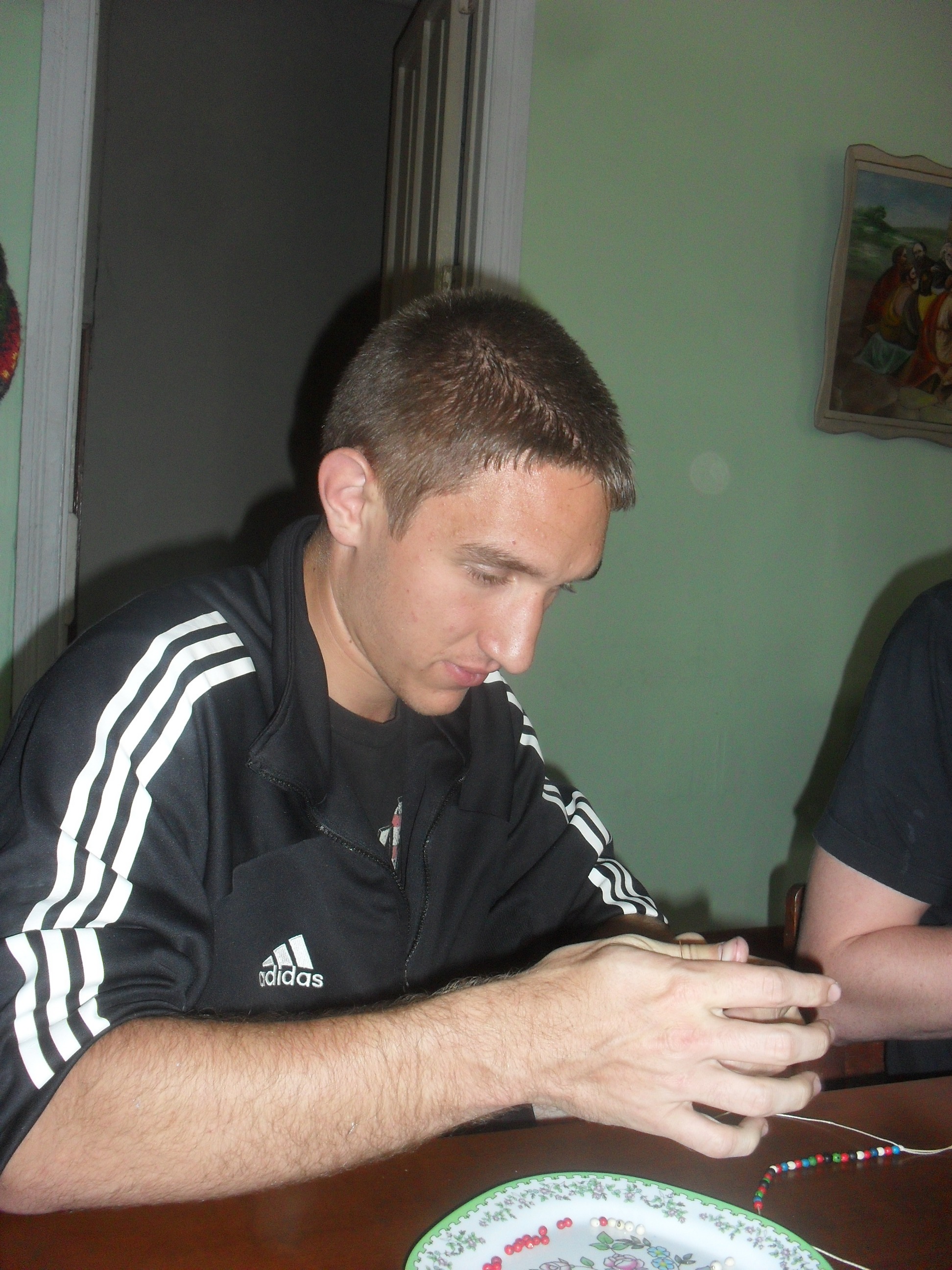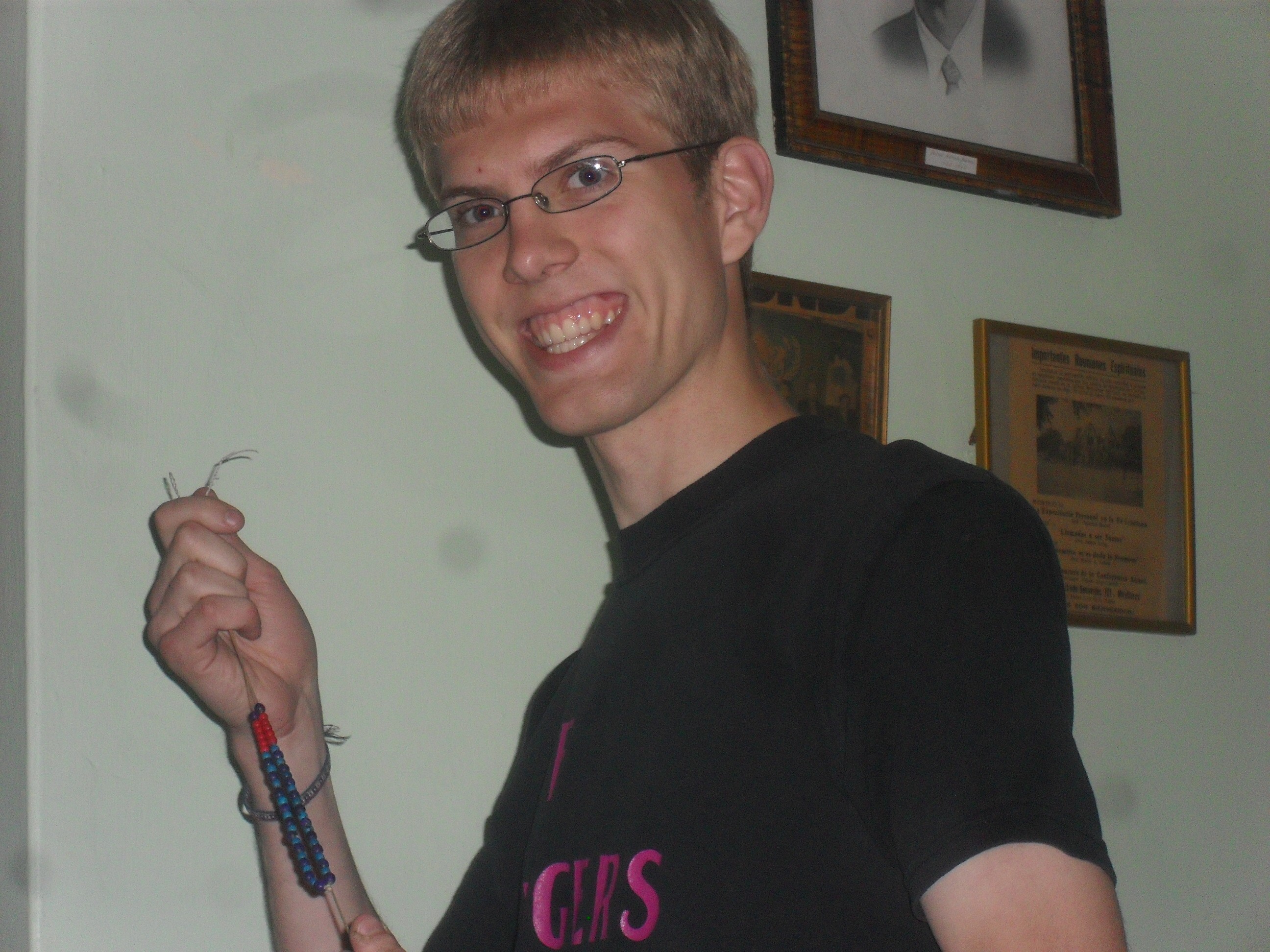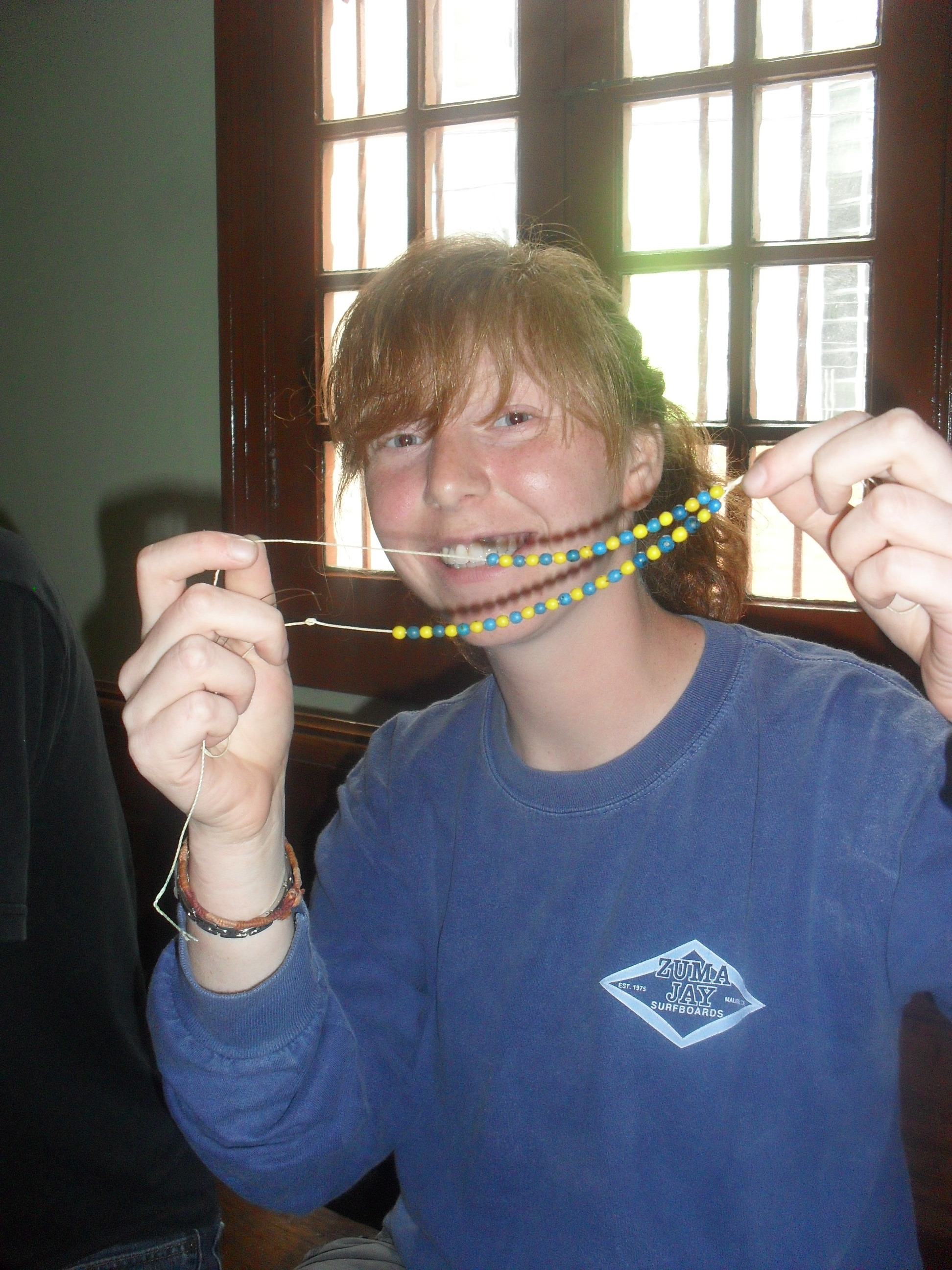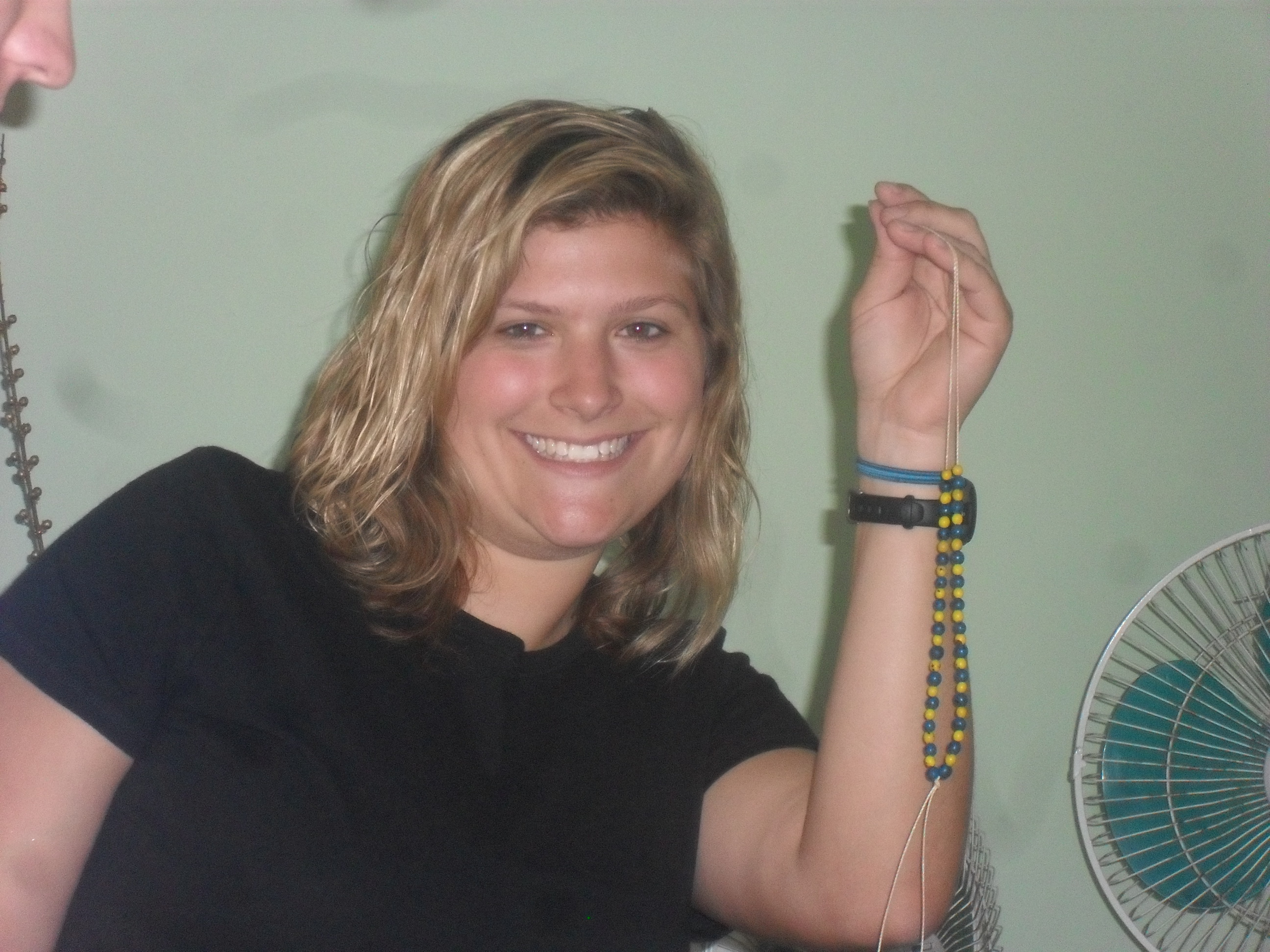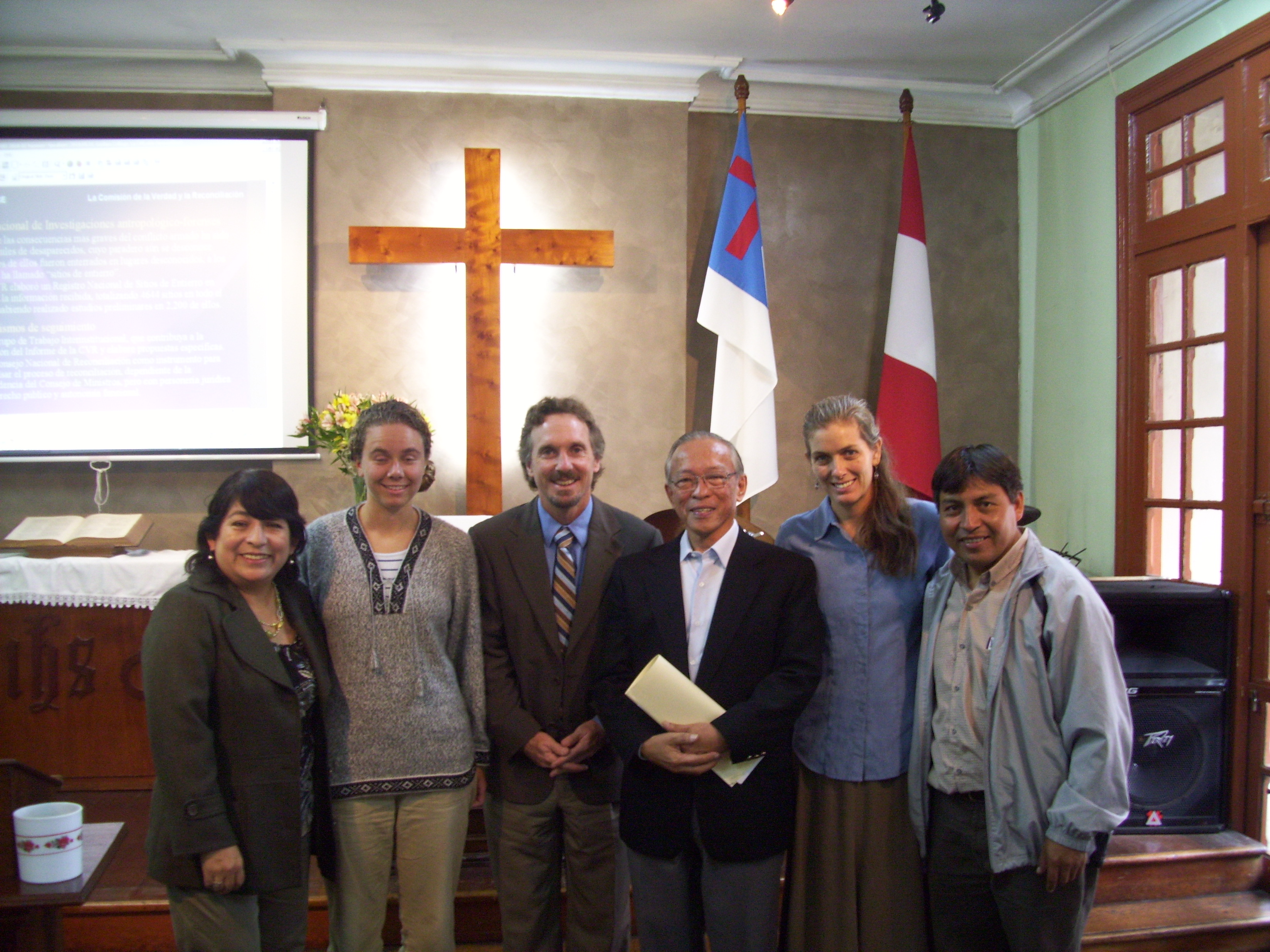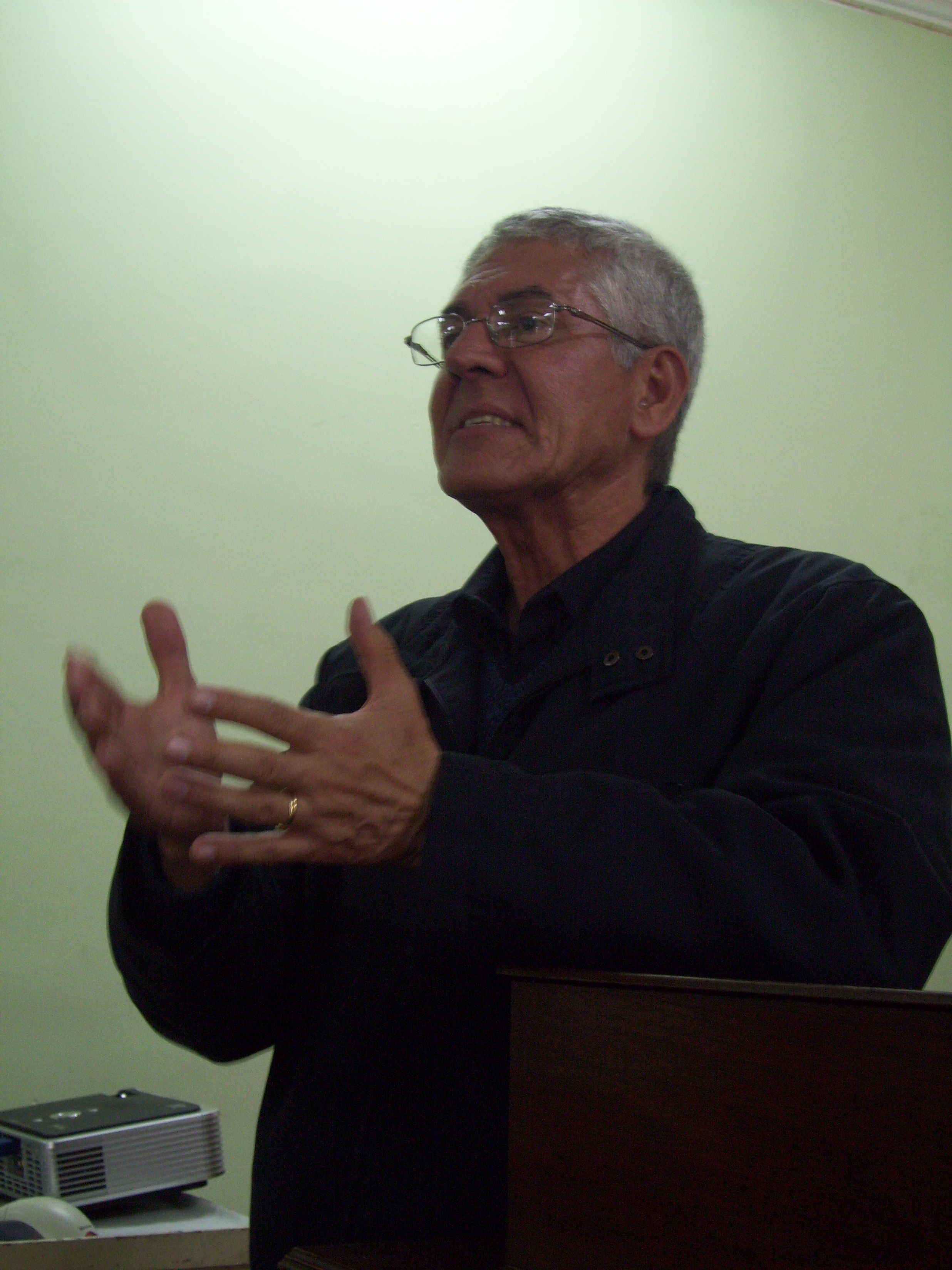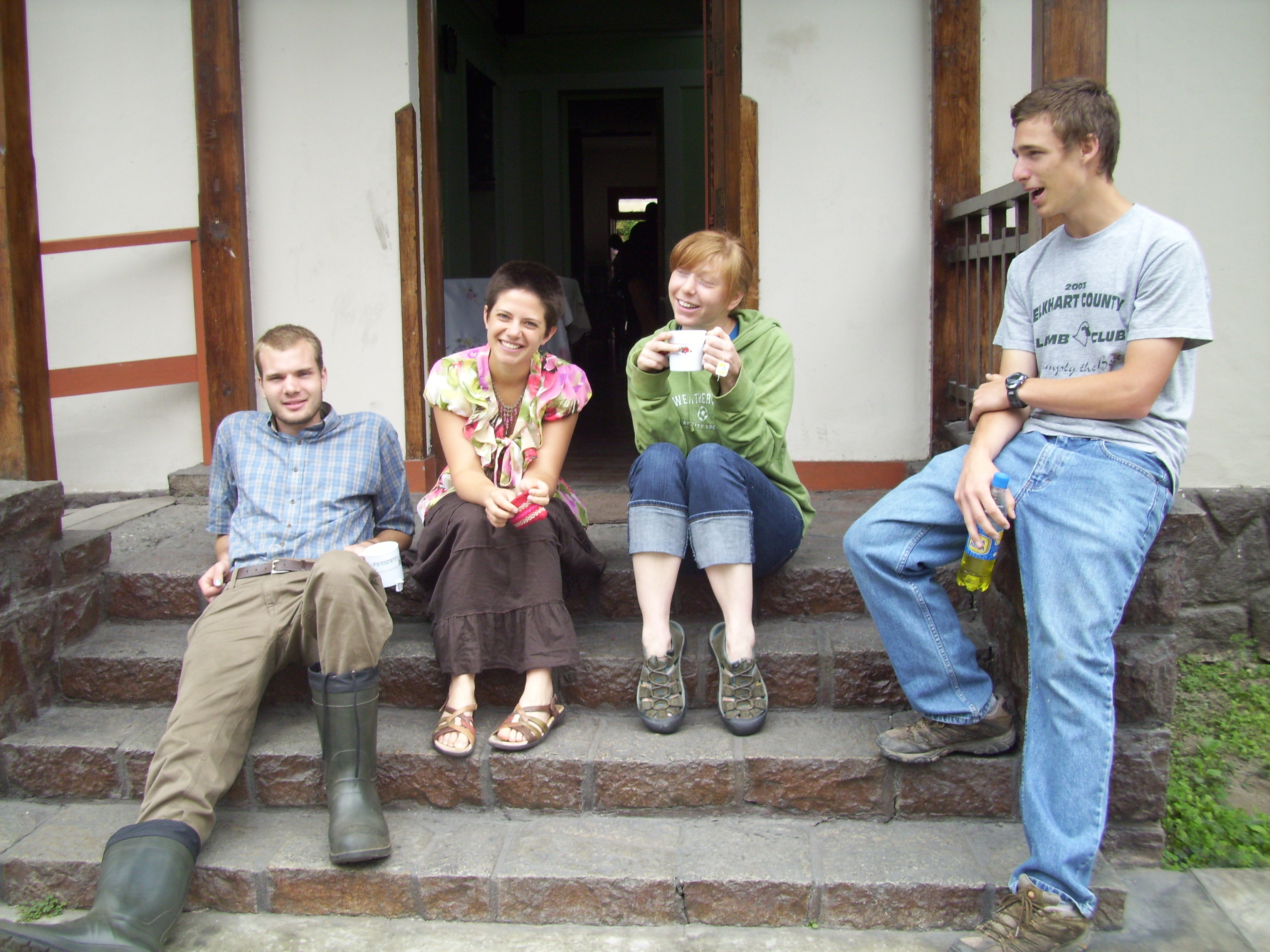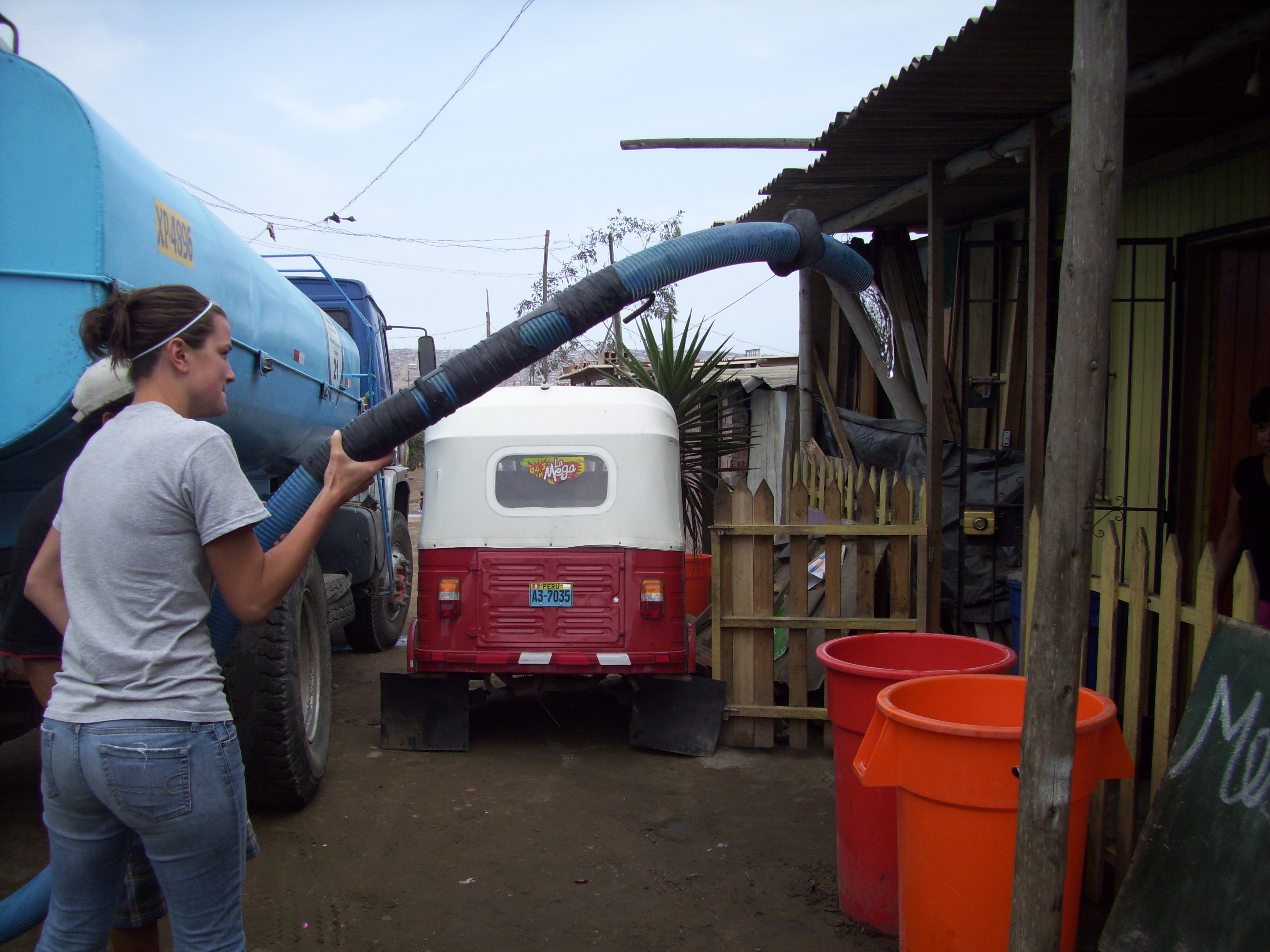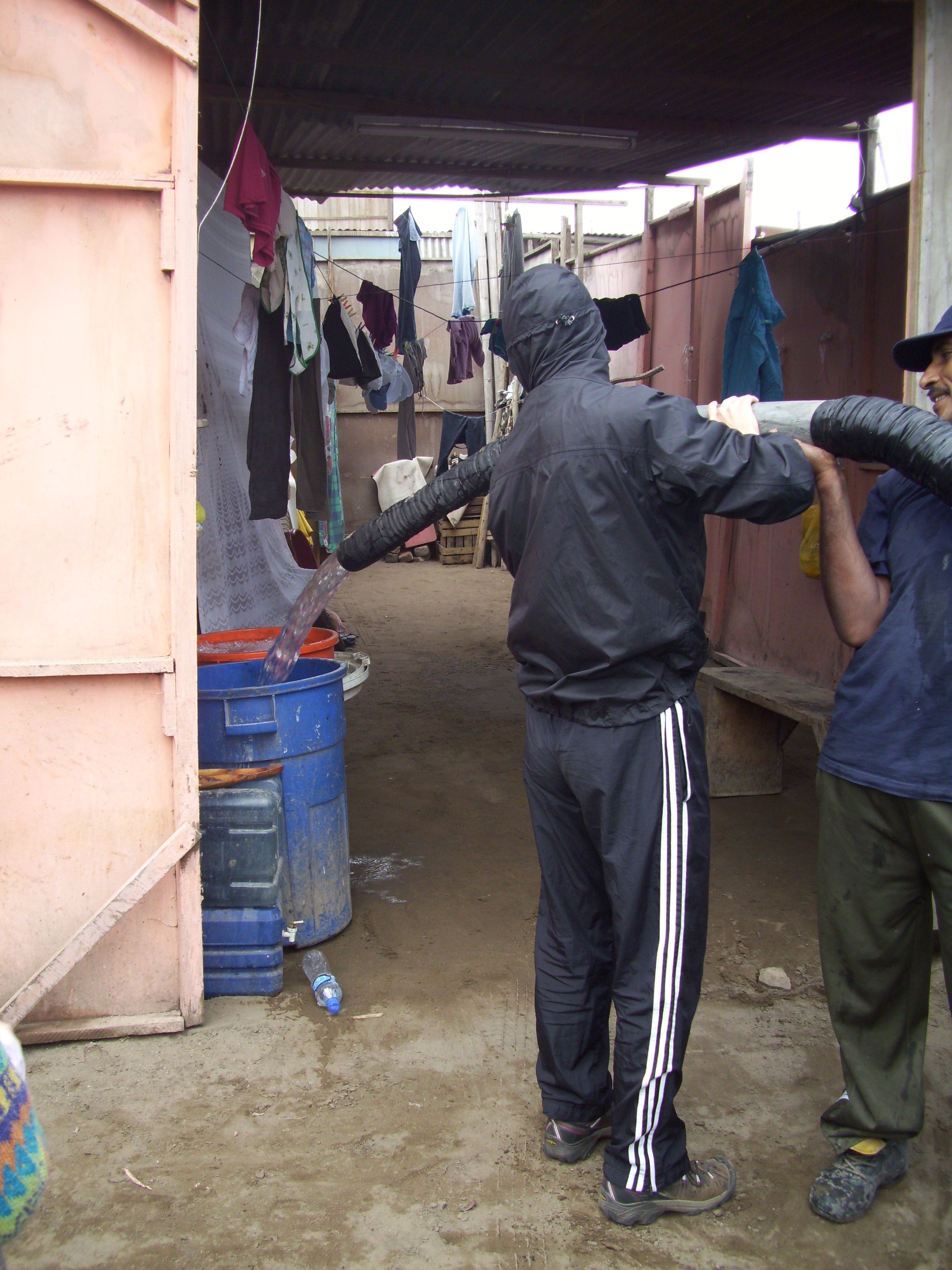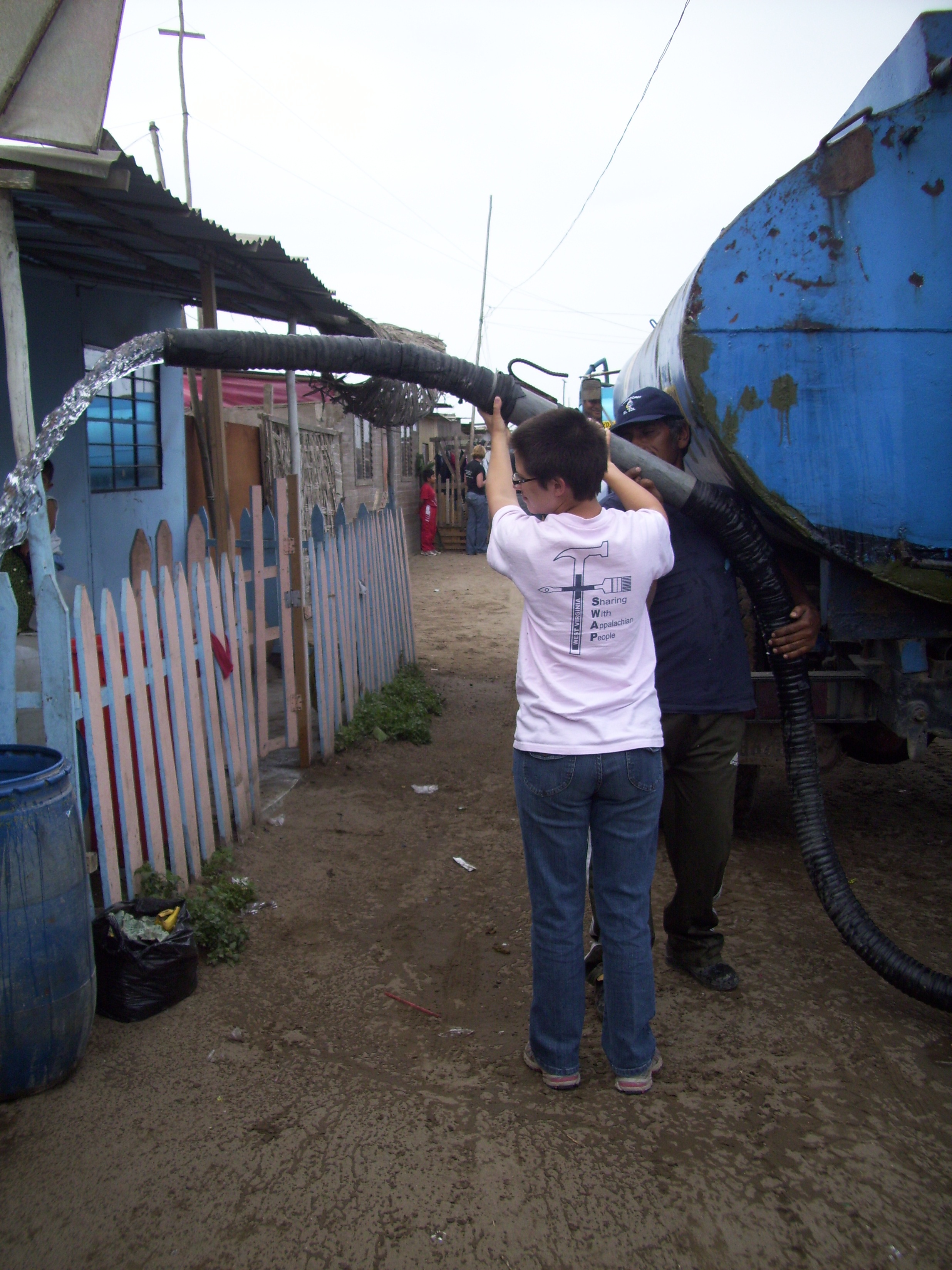Workshops, Words, Water
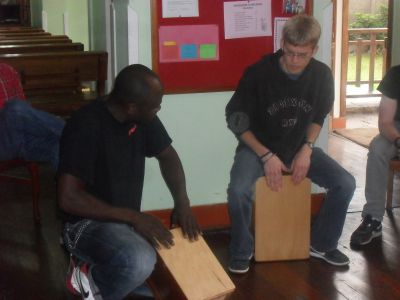
This semester we organized three workshops: Traditional Dancing, Cajon Drumming and Jewelry Making. We invited Peruvian artists — Pedro Farias, Camilo Ballumbrosio and Ricardo and Eliana Mauriola Carrasco — to introduce their topics in a series of two-hour sessions for our entire group. Then we gave each student a chance to choose one topic and go into more depth as we prepared for the Despedida, or farewell party, at the end of their time here in Lima. Seven students learned a dance from Puno near Lake Titicaca. Seven others learned a set of Afro-Peruvian rhythms from Chincha. And the remaining seven created hand-made necklaces and earrings as gifts for each host mother.
We enjoyed the eloquence of several guest speakers. Humberto Lay is an architect, pastor and serious contender for the upcoming Lima mayor’s race. Mr. Lay also served on Peru’s Truth and Reconciliation Commission, helping to shed light on the atrocities committed by both terrorists and the military during Peru’s internal war against the Shining Path and MRTA guerrillas. He spoke about the efforts of the Commission to bring healing to a nation recently divided by a messy war and gave a frank assessment of the challenges that still remain. Jose Manuel Prada is a missionary from Colombia and pastor at the Comunidad RETO Internacional Mennonite Brethren Church in Lima. He described the ongoing conflict between the Peruvian government and indigenous groups in the Amazonian rain forest. Recent policies designed to promote oil and gas extraction have led to destruction of the forest and damage to many native communities, culminating in a bloody battle between natives and soldiers in Bagua last summer. Pastor Prada explained why Christians should care about this conflict and described the Church’s efforts to heal the wounds in one village, Tampe, during a visit earlier this year.
The students have participated in several one-day service projects over the course of the semester. Our last assignment was in a neighborhood at the edge of Lima that was “invaded” by poor families ten years ago. The government has promised to give the families titles to their land and establish basic public services, such as water, sewer and electric lines. As residents continue to wait for this promise to be fulfilled they live without the infrastructure most of us take for granted. Water, for example, is delivered each day by passing tanker trucks who fill up the tubs and basins set outside each home. Our project was simple: Purchase five tank loads of water and help distribute it to residents free of charge. Funds for the purchase came from a North American donor and from Goshen College students who were so excited about a similar project last semester that they took up a collection before they returned to the U.S. and asked us to use it to purchase an extra truck load this time around.
